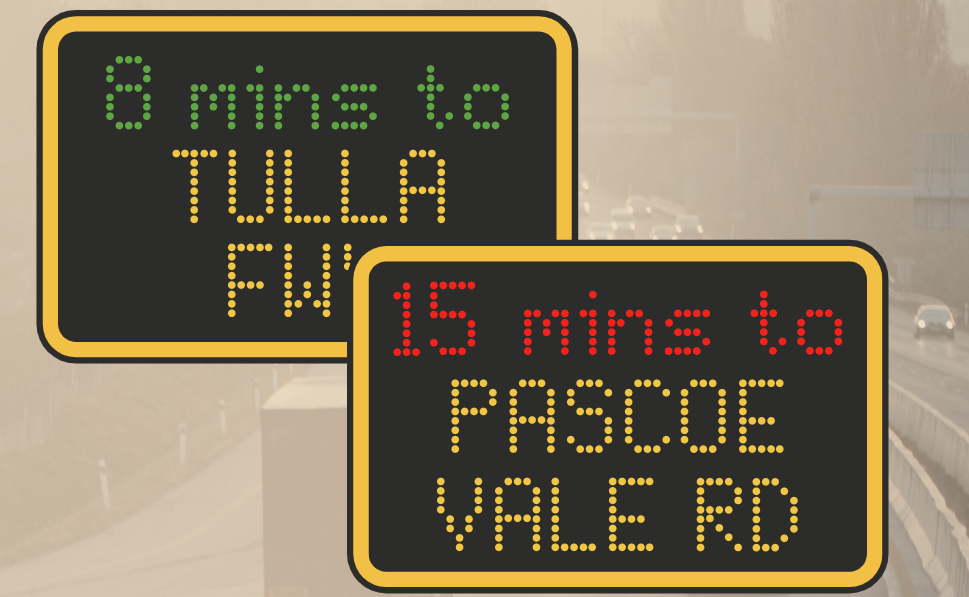
Intelligent Transport Systems take a smarter approach to transport and traffic management, creating more effective management of the road network system. When there is traffic congestion due to roadworks, incident response or other hazards, providing real-time travel time information to road users can help them make an informed decision, reduce road congestion, and direct high-volume traffic away from worksites.
<br /><br />
Strategically placed <a href="/Products/Variable-Message-Signs" title="Variable Message Signs">Variable Message Signs (VMS)</a> are a key component in traffic management as they have the ability to display real-time travel information, enabling effective management of freeways and wider road network systems.
<br /><br />
The provision of this information will improve a road user’s experience as it can help to minimise travel delay, exposure to congestion and improve travel reliability when using the road network.
<br /><br />
Real-time information offers the road user accurate data to make an informed decision on their route, which, in turn, can divert high-volume traffic away from work sites and minimise community impact.
<br /><br />
<b>Strategic signage for maximum effect</b>
<br /><br />
To get the greatest effect from the travel time display there are certain strategic placements that can maximise the outcome.
<br /><br />
Travel time displays are best used on high-capacity roads that also have good connectivity within the network in order to benefit a greater volume of traffic.
<br /><br />
The VMS display should typically be set up within four to six minutes drive of the displayed destination and before major turn offs and connected roads. This gives road users adequate time to make an informed decision and take an alternate route if they desire. The destination names should also be clear, correct and consistent for road users’ ease of navigation.
<br /><br />
Australian standards state that <a href="/Products/Variable-Message-Signs" title="Portable VMS">portable VMS</a> should not be placed in a position where it will distract drivers or become a hazard to pedestrians. No part of the VMS should overhang on the kerb of the road or be in a position where it can create a hazard to road users. When not in use, portable VMS should be removed as soon as possible.
<br /><br />
If the VMS is placed on the footpath and creates a hazard or blocks the path of pedestrians and other footpath users then an alternative safe path should be identified. If the VMS is placed in a traffic lane then an appropriate traffic path should be clearly delineated.
<br /><br />
<b>Harnessing the power of GPS and Google</b>
<br /><br />
The Travel Time option provided by Australian manufacturer, Data Signs, makes use of the GPS location of each DataSign-VMS to obtain and display the time it currently takes to travel to another DataSign-VMS or separate location. Travel time data is updated every 20 minutes and is obtained from Google’s Distance Matrix (as used on Google Maps).
<br /><br />
Data Signs Managing Director, Mr. Venema, said Travel Time is an innovative way to give power back to the road user and effectively manage traffic well before they reach the impacted Destination.
<br /><br />
The key point of difference for Data Signs VMS displays is when displaying travel time information with Data Signs equipment, it requires <b><u>no additional hardware and infrastructure cost</u></b> to place additional sensors such as Bluetooth readers on the side of the road. Also the license is transferable from one VMS unit which can display Travel Time to another.
<br /><br />
The other key feature is it can display the travel time from the VMS board to a ‘fixed location on the map’ i.e. an intersection or turnoff point.




